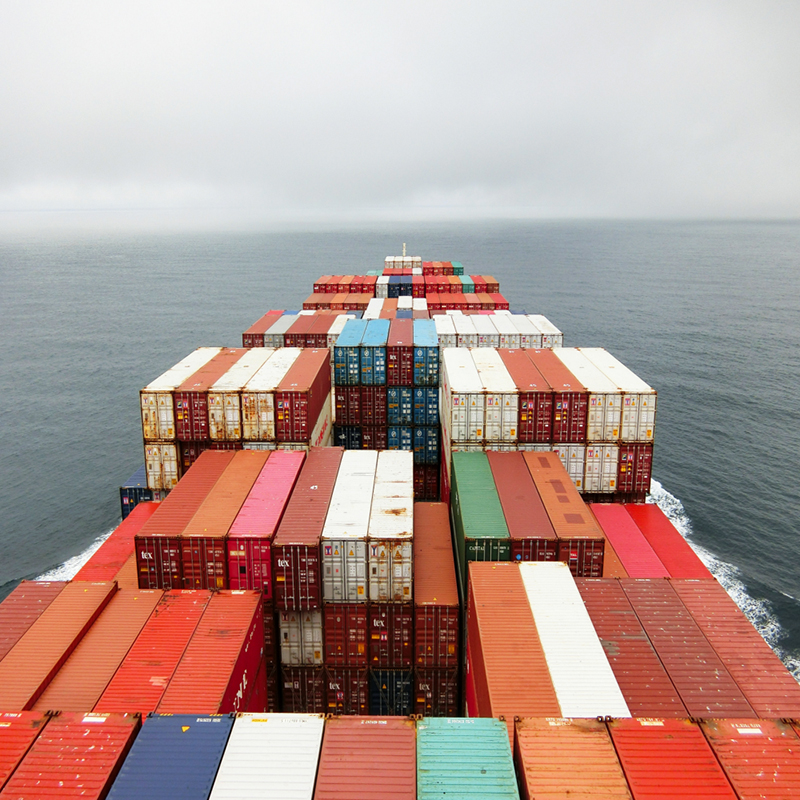The maritime sector stands at a pivotal moment, facing the daunting challenge of decarbonization while navigating economic and geopolitical headwinds.
The industry’s greenhouse gas emissions, which account for 3% of the global total, have increased by 20% over the last decade. Without action, emissions could reach 130% of their 2008 levels by 2050 . Sustainable Transportation

Complicating matters is an ageing world fleet. As of early 2023, the average ship’s age was 22.2 years. With over half now older than 15 years, many ships are either too old to retrofit or too young to scrap .
The urgency of decarbonization is evident, yet the sector faces multibillion-dollar investments amid uncertainty about the best transition methods.
Alternative fuels show promise, but their adoption remains in the early stages, with 98.8% of the fleet still sailing on fossil fuels. The silver lining is that 21% of vessels on order will operate on cleaner alternatives like liquefied natural gas, methanol and hybrid technologies.
Another layer of complexity is the question of who is responsible for the transition . The major flag states Liberia, Panama, and the Marshall Islands, which account for a third of shipping's carbon emissions, will be responsible for enforcing new green shipping standards. But the onus for investing in alternative fuels, bunkering facilities and greener ships falls largely on ship owners, ports and the energy-producing industry.
Navigating this complex tangle of economic, regulatory and environmental priorities is the industry's next big test. Decisions on decarbonization measures are taken by the International Maritime Organization (IMO) and its members.
The heavy financial burden of moving the shipping sector towards cleaner energy could disproportionately impact the most vulnerable nations .
Estimates show that decarbonizing the world’s fleet by 2050 could require $8 billion to $28 billion annually. The infrastructure for 100% carbon-neutral fuels could need an even heftier $28 billion to $90 billion each year. If achieved, full decarbonization could double yearly fuel costs .
The daunting price tag raises concerns, especially for small island developing states (SIDS) and least developed countries (LDCs), already burdened by higher shipping costs.
These vulnerable nations on the front lines of climate change are heavily reliant on maritime transport for trade and economic growth. They could face significant economic setbacks from the increased costs .
The report advocates for targeted support to mitigate the impacts, including a levy or contributions on fuel emissions, which could be used to help make ports in SIDS and LDCs more climate ready, efficient and digitally connected.
It also calls for global collaboration through green shipping corridors – designated routes for sustainable vessels – underscoring the importance of ensuring such initiatives benefit vulnerable economies.
Such financial and technical support is essential to ensure the maritime sector’s energy transition is just and equitable.
Container ships tend to wait less time in ports in developed economies than in developing countries, due to a combination of faster clearance times, better infrastructure and higher labour productivity.
During the COVID-19 pandemic, however, wait times surged more in developed countries and in some cases even exceeded those in developing nations.
But by late 2022, turnaround times generally began to recover from the pandemic .
The report’s analysis at the country level shows port performances vary primarily because of different levels of automation – normally higher in developed country ports – and traffic types, with imports and exports tending to take longer than transshipments.
UNCTAD’s latest Liner Shipping Connectivity Index shows China as the top performer, followed by the Republic of Korea, Singapore, Malaysia and the US. Europe saw Spain, the Netherlands and Belgium climb in the index, while the UK fell.
Rebounding from COVID-19's shipping disruptions, many countries in Asia, Latin America, the Caribbean and Oceania posted their best performances .
Meanwhile, inefficiencies continue to hamper many ports in Africa and SIDS . Despite improvements, their performances remain below pre-pandemic levels.
Factors like ships moving to European and North American markets and drops in tourism affected the scores of SIDS. While some hubs like Jamaica and the Dominican Republic improved, others such as the Bahamas and Mauritius continued to lag.
See the key maritime transport figures for Africa, Asia and Latin America and the Caribbean.
In a turbulent global landscape marked by geopolitical events like the war in Ukraine, the maritime industry showed remarkable resilience , adapting to new, lengthier trade routes.
Maritime trade volumes dipped 0.4% in 2022 but are on track for a 2.4% rebound in 2023 and above 2% growth through 2028 .
A sector-specific analysis shows that containerized trade, vital for transporting everything from electronics to food to medical devices, is also bouncing back, forecast to grow 1.2% this year after suffering a 3.7% drop in 2022. Trade volumes remain, however, below pre-COVID-19 levels.
In the energy sector, the oil and gas trades surged 6% and 4.6% respectively in 2022 as pandemic restrictions eased.
Tanker and dry bulk rates, key industry barometers, have also shown positive trends.
Tanker freight rates, crucial for oil and gas transport, peaked in 2022 and remain strong in 2023. But uncertainties due to the energy transition and new regulatory requirements could limit future carrying capacity .
Dry bulk rates, affecting commodities like grain and coal, were volatile in 2022, peaking in May before falling to pre-pandemic levels by the year's end. Rates have since rebounded as demand surged and China’s industries recovered.

Transport Express To sustain resilience against future challenges, especially climate change, the sector must not only accelerate decarbonization but also enhance port efficiency and adopt new technologies, focusing on the needs of developing economies.
